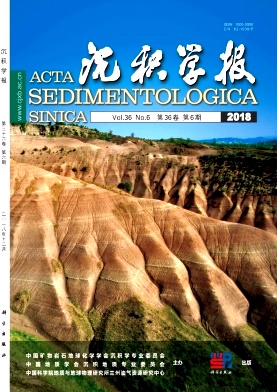The Similarity of Salt-Forming between Flume Experiment and Modern Salt Lake
doi: 10.14027/j.issn.1000-0550.2018.117
- Received Date: 2017-11-24
- Rev Recd Date: 2018-01-07
- Publish Date: 2018-12-10
-
Key words:
- rock salt /
- flume simulation experiment /
- analogy analysis /
- modern sedimentation /
- salt-forming model
Abstract: Salt precipitation simulation experiments help enhance our understanding of salt-forming models; however, the premise of using forward modeling is that the experimental model is similar to the sedimentary mechanism of the salt lake prototype. Based on the field geological survey of modern salt lakes, this paper makes an analogy analysis of salt precipitation models and modern salt lakes, in terms of sediment texture, spatial distribution characteristics, and similarity of sedimentation mechanism. The results show that it is mainly the air-brine interface salt and salt formation through evaporation in the smaller depth of the flume; and for the deeper water and large-scale modern salt lake, the two kinds of salt-forming methods are mainly distributed in the shallow waters of the lake basin. The slopes and depressions with larger water depth are mainly brine-lake sediments interfaced with salt precipitation, which reflect the shallow water of the flume cannot reproduce lake basin bottom and sediment distribution characteristics of the ancient salt lake. Modern sediments show that in the closed inland salt lake basin, the rock salt is mainly formed in the lake retreat period-low period, and its depositional thickness gradually increases from the edge of the lake basin to the depression center, i.e. the deposition center of the rock salt and the depression center are consistent. The texture of rock salt is closely related to the sedimentary environment. The rock salt in the edge of the basin mostly coexists with the sandstone, and the grain size is small, while the depression is mainly composed of coarse-grained salt rock, single-layer thickness and is large, often with dark mudstone interbeds. The relationship between the center of the rock salt deposition and the center of the depression is of great theoretical and practical significance for the restoration of paleogeomorphology and sedimentary body of the lake basin.
| Citation: | ZHUO XiZhun, ZHANG LinYan, CHEN XiaoShuai, YAN QingHuan, CUI JianJun, YANG Yu. The Similarity of Salt-Forming between Flume Experiment and Modern Salt Lake[J]. Acta Sedimentologica Sinica, 2018, 36(6): 1119-1130. doi: 10.14027/j.issn.1000-0550.2018.117 |






 DownLoad:
DownLoad: